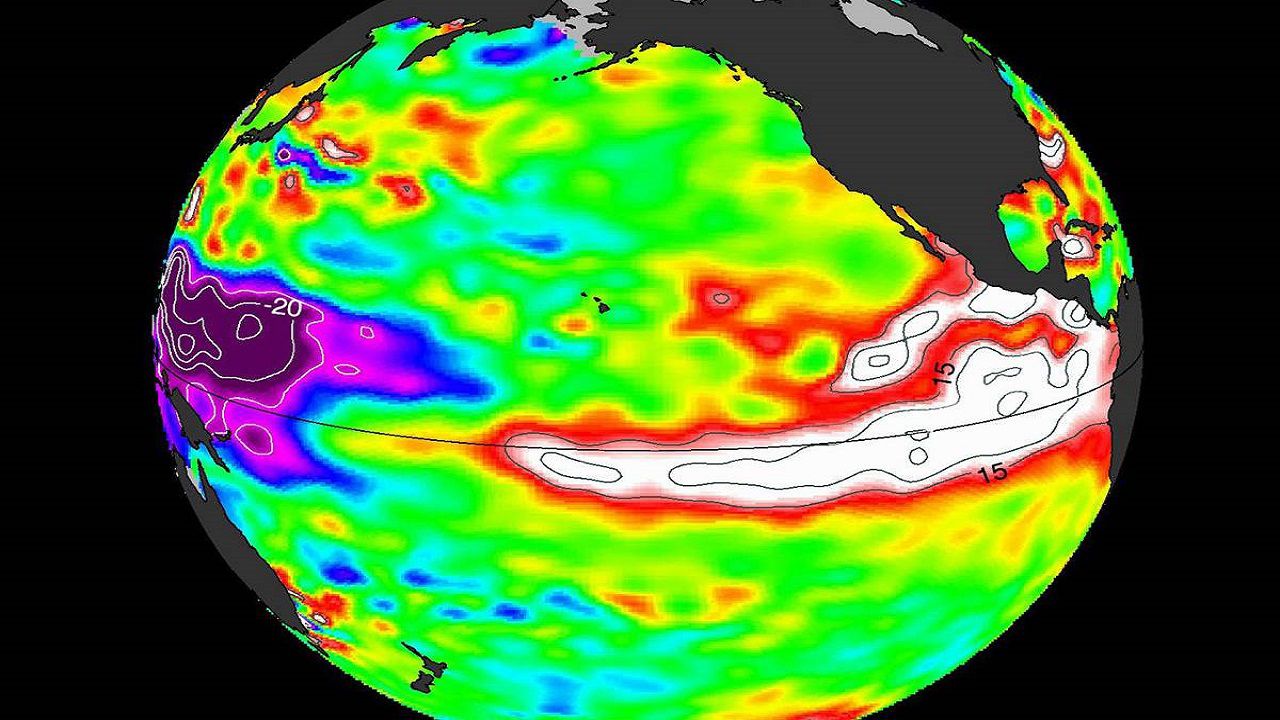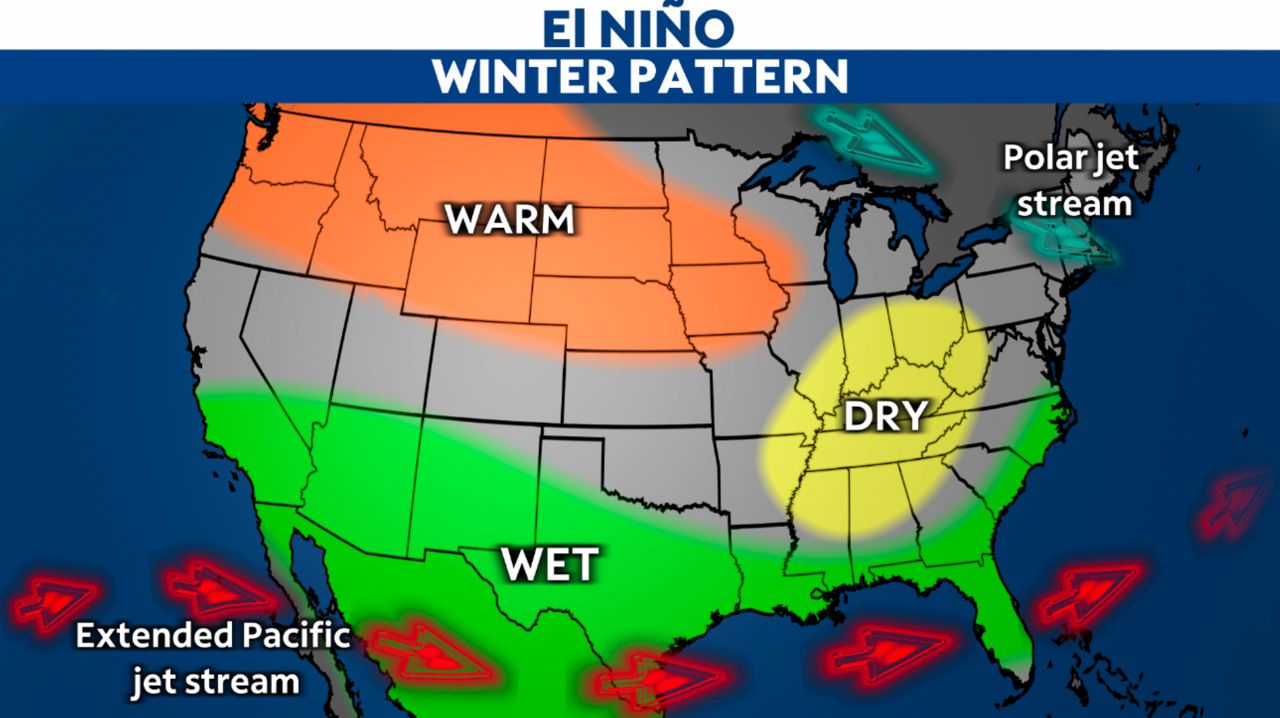Following a triple-dip La Niña event, El Niño has formed about a month earlier than usual.
The National Oceanic and Atmospheric Administration issued an El Niño advisory, stating that conditions are currently present and are expected to only strengthen into the 2023-2024 winter.
Following a very active winter on the west coast during an abnormally wet La Niña year, a strong El Niño could lead to even more rain during the fall and winter months on this side of the country.
Before we discuss El Niño potential impacts, let's break down its origin.
El Niño (and La Nina) is known as the El Niño-Southern Oscillation, or ENSO for short. This is a reoccuring weather pattern caused by temperature anomalies in the Equitorial Pacific Ocean.
Centuries ago, Peruvian fisherman noticed the warm up of coastal waters occurred occasionally during the Christmas season and called the warming El Niño de Navidad in reference to the 'Christ Child'.

In an El Niño event, Pacific sea-surface temperatures are warmer than usual, and the warmer the waters, the stronger the El Niño event is typically that year.
Why is this important? These sea-surface temperature changes in ENSO events has the ability to affect atmospheric circulation in a significant way that affects the entire globe.
When El Niño is present, the jet stream track shifts father south and strengthens during our rainy season months due to the warmer water temperatures and air over the Pacific.

A southerly and more amplified jet could help drive more storms into SoCal after an unprecedented 2022-2023 winter full of flooding, low elevation snow, and severe weather -- including tornadoes. Another abnormally wet season could mean even more urban and rural flooding and a deep snow pack for our area mountains.
This is not to say that the same situation will happen during our upcoming winter season. El Niño events have been tracked for years, but each event plays out differently. The usual impacts, even during a strong ENSO season, is not guaranteed.
Our team of meteorologists dives deep into the science of weather and breaks down timely weather data and information. To view more weather and climate stories, check out our weather blogs section.



